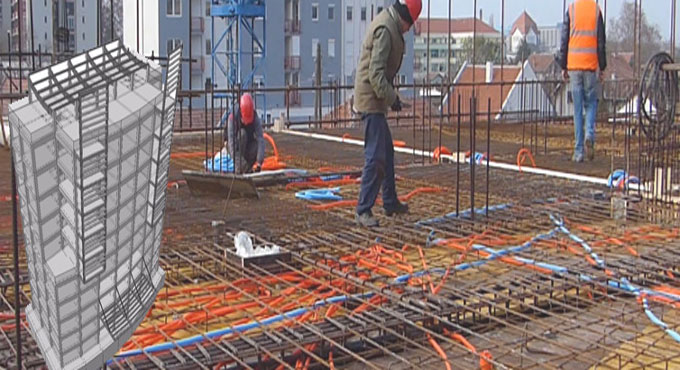
Benefits of Reinforced brick-concrete construction of roofs
Reinforced brick-concrete construction of roofs is normally suitable for the areas where the obtainable quality of bricks is standard and stone chips for concreting is expensive. Under this method, concrete is partially substituted with bricks.
Bricks are permeable and soak up moisture. Therefore, R.B.C., when vulnerable to weather, the applied bricks are uncovered and affected with moisture. Later, transfer it to the concrete joints embedding reinforcing bars. The bars are affected with corrosion and consequently, the strength is reduced. Accordingly, it leads to collapsing of the tensile member finally.
Hence R.B.C. should not be used in roof slab which is susceptible to seepage of rain water or in uncovered surface where the same would stay in touch with moisture frequently.
Under this method, this slab is not cast-in-situ rather it is prefabricated on the ground in two components, beams and panels. The beams having length up to 3.5m are precast in sections 130 x 100 mm providing a loop with anchor bar.
The panels of bricks with placement of reinforcement are cast in sizes of 1150-1200 mm in length and two bricks wide. These panels after being cured and hardened are managed manually and set in exact location.
Initially, the beams are arranged, then the panels are provided over the beams. The cement concrete and mortar are used to fill the joints. Over arranged panels cross-reinforcements are provided by binding the main reinforcement in the loops of the beams.
A 35 mm thick layer of concrete M15 is placed over the panels overlaying the beams and penetrating the parapet to build up ?ghoondi? (cove). It will transform the slab as good as a 100 mm thick R.C.C. slab.
The major benefit of R.B.C. construction in this method is to get rid of time consuming work of erection and detachment of shuttering. Another benefit is huge saving in construction time when the panels and beams are precast.
Since the top layer is 35 mm thick and placed over a hard surface and implanted with panels through reinforcements and entered the parapet walls to make cove, it operates as a water proofing course.
If heavy rainfalls occur in that area, there is no requirement for further water proofing course is required.


